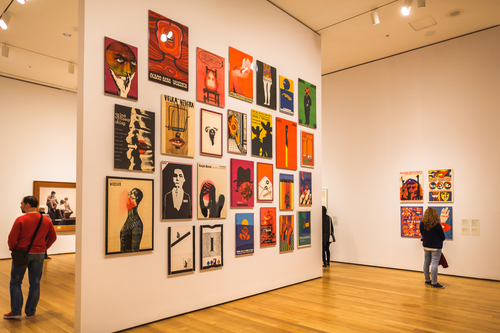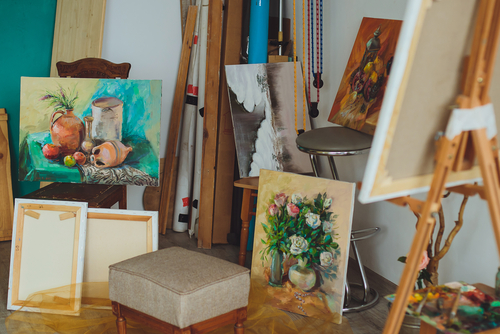Most artists often struggle with selling their work. They may have great talent but no one ever notices them. That’s the sad reality with the art industry. There’s so much to prove just to be able to display their work in an art gallery. The rejection rate is very high that oftentimes they lose their confidence and drive. This is one reason why some artists just quit and find a job that they are not happy with.
As an artist, how do you avoid these scenarios? How do you get your work into art galleries?

Research
Get as much information as possible about the gallery you wish to display your work at. Know what kinds of artwork they prefer, which artists they already work with, how long they are in the business, and how you think they would approach new artists. This information would likely be available on their website. Take time to read as much as you can about them. This is how you learn if they would be interested in your art. A gallery who sells landscape paintings wouldn’t want to take an abstract and hardcore painting right? As an artist who is still trying to make a name, you will surely get a rejection if you attempt to send your portfolio.
Get to know other artists
Artists are sometimes introverts and are comfortable working in isolation. They are often not comfortable mingling with other people, especially with other artists. That may be fine with others, but it’s not a good idea if you want to get your work up on that wall. Remember your research about the gallery you want to work with? Yes, you need to know the artists that they work with. Find a way to meet other artists, befriend them, and grab the chance to show them your work. Why? Because they can be your way to get into that gallery. Recommendations are far better than a perfect portfolio. They will be the one to determine if your work is gallery worthy or not. If you meet the right artists who share the same passion as yours, then you hit the jackpot! They may mention your name to the gallery owner and they may ask you to send in your portfolio.
Learn to describe your work
Read art reviews to know how art experts and reviewers evaluate artwork and exhibits. This way, when you are asked to describe your work, you will have an idea what to say. Also, don’t assume that your art will be loved by everyone including the gallery owner because as the saying goes, “beauty is in the eye of the beholder.” Hence, don’t say something that may make you sound arrogant or overconfident. It may look perfect for you but not for others. Try describing your art pieces by explaining how you felt when you were making them and what they mean to you.
Know the proper timing
Galleries are often very busy. They have a lot of work to do, not just hanging a frame on the wall or arranging the display. They hold exhibitions, conduct meetings, and a lot more. Since you did your research about your prospect gallery, you probably have information on when they will hold their next exhibit. Never send your portfolio during these times. There’s a huge chance that they will not review your work. They have so much on their plate to accept another task of looking at your profile. Go for the less busy times; with the proper recommendation, you may end up getting an appointment within the week.

Know your real worth
For you, your art is something very valuable. You have put in a substantial amount of effort and hard work. That’s a given, but you should know the real market value of your art. You cannot compare yourself with the artists that have been in the market for a long time unless you are already on their level. You will not be able to fully dictate how much your art is going to cost. The art galleries will have a say on how much you can sell your work.
Market yourself
Create your own website, or post your work on social media and collect followers and likers. This is a good way to establish your own audience and potential clients. This will be helpful to the gallery, too. They will not have a hard time selling your work especially if your followers know where they are displayed. Get those five-star ratings on social media and you will have added value to your work.
At first, you will surely get a lot of rejections when pitching your art. That’s totally normal. You will get stronger and more mature with every “no” that you receive. During these times, it is best that you develop your skills more. If you are into photography, go to this guide; it will help you learn more techniques that you can apply to your portfolio. Remember, you get better with every rejection and learning, so don’t ever quit. The world is waiting to see your gift!
